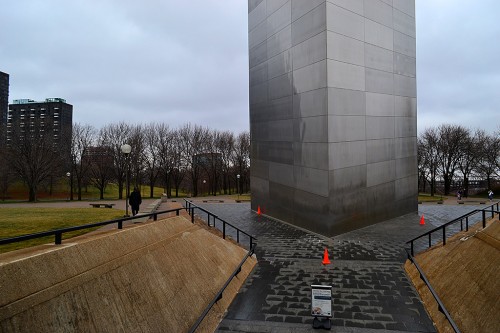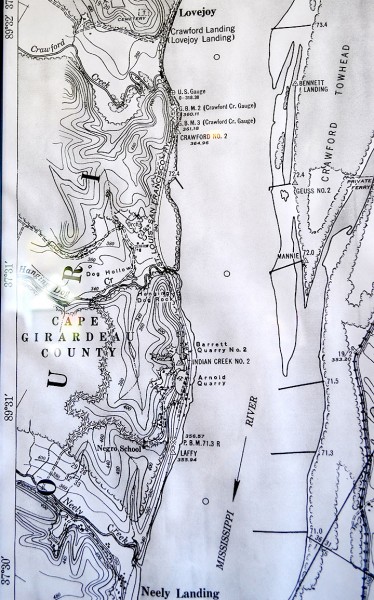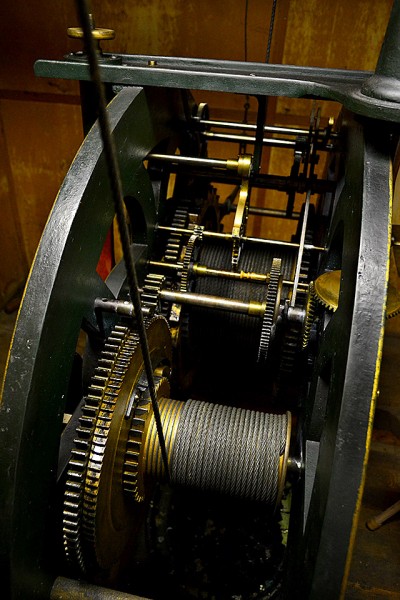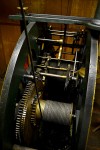 Friend Jan and I had planned to visit St. Louis’ Gateway Arch Tuesday, but the torrential rains kept us from our goal. We got to the site too close to her departure time for her to see the movie on the building of the structure, one of my favorites, but she did get to walk around it taking photos.
Friend Jan and I had planned to visit St. Louis’ Gateway Arch Tuesday, but the torrential rains kept us from our goal. We got to the site too close to her departure time for her to see the movie on the building of the structure, one of my favorites, but she did get to walk around it taking photos.
You have to lick the arch
 I tried to convince her that it was tradition that newcomers to the arch had to lick it. Daughter-in-Law Sarah must have warned her about that gambit, because she got close enough to tease the arch, but not close enough to give it a healthy lick.
I tried to convince her that it was tradition that newcomers to the arch had to lick it. Daughter-in-Law Sarah must have warned her about that gambit, because she got close enough to tease the arch, but not close enough to give it a healthy lick.
Turned down tram ride
 I think she was ready to take the 4-minute tram ride to the top of the arch despite all the horror stories about claustrophobia and getting stuck. Ready, that is, until she got into a mock-up and realized that she’d be sharing that small space with four other riders.
I think she was ready to take the 4-minute tram ride to the top of the arch despite all the horror stories about claustrophobia and getting stuck. Ready, that is, until she got into a mock-up and realized that she’d be sharing that small space with four other riders.
I got the feeling her togetherness quota had already been exceeded on this trip.
Time to wave goodbye
 Eleven days, 2,422 miles and nine states after we started our trek, it was time to put her on a plane back to sunny Florida. She made her escape just in time. Shortly before I dropped her off, I noticed some white pellets on my blue jacket that weren’t dandruff. The wind picked up and the white stuff kept coming down harder. It wasn’t sticking yet, but there was enough of it to blow around in the roadway.
Eleven days, 2,422 miles and nine states after we started our trek, it was time to put her on a plane back to sunny Florida. She made her escape just in time. Shortly before I dropped her off, I noticed some white pellets on my blue jacket that weren’t dandruff. The wind picked up and the white stuff kept coming down harder. It wasn’t sticking yet, but there was enough of it to blow around in the roadway.
I met with some folks about a possible St. Louis photo exhibit, then went to dinner with Friend Shari. When we got out of the restaurant, the stuff was still coming down and I had ice on the windshield. That’s when I decided to stay at Brother Mark’s house one more night rather than chance finding a slick spot on the way back to Cape.
Is this going to work out?
To be honest, before we left Florida, I wasn’t sure how this pairing was going to work out. Sure, we had worked and biked with each other for years, but being trapped in a car with someone for days is another thing. That’s why Wife Lila flies back home and I drive.
After it was all over, Jan and I are still speaking each other. She and Mother bonded. (I’d wake up in the morning hearing they chattering away in the kitchen like magpies.) I even noticed a few times when Jan said, “The next time I come back….”
Photo Gallery of the Last Day
Here are some pictures of Jan’s last day in Missouri and the Gateway Arch. Click on any photo to make it larger, then click on the left or right side of the image to move through the gallery.





























